Windows to the sky at Arches National Park
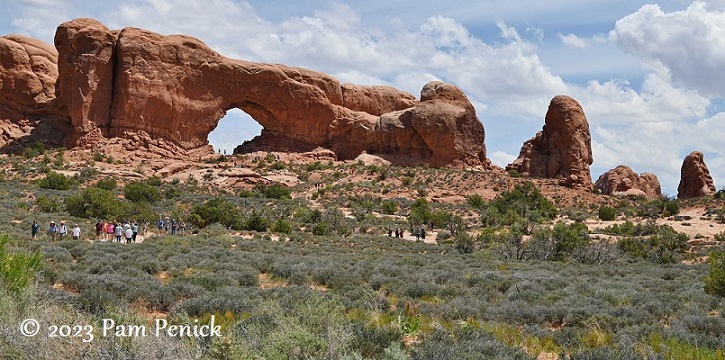
In early May, during our national-parks RV trip, we spent a day exploring Arches National Park in eastern Utah. The place is a wonderland of hole-punched, fin-like, and soaring rock formations, including more than 2,000 documented stone arches.
Located near Moab, with its hotels, RV parks, restaurants, and bars, Arches gets loved to death. To manage visitor numbers and traffic, the park service requires that you get a timed entry ticket to enter between April 1 and October 31. So if you’re going, plan ahead and also get to the park early to beat the line of cars waiting to enter.
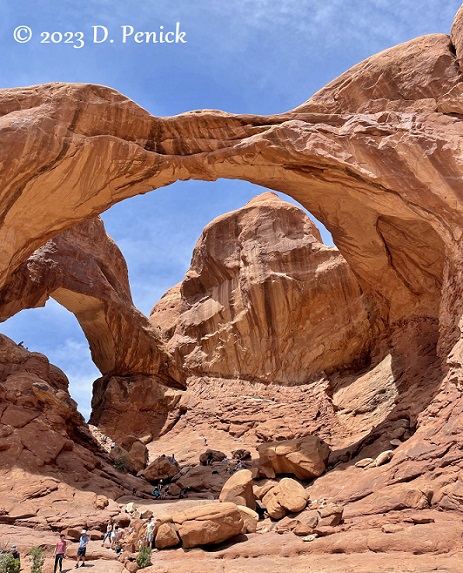
From the park’s website, a little geological history:
“The story of Arches begins roughly 65 million years ago. At that time, the area was a dry seabed spreading from horizon to horizon. If you stood in Devils Garden then, the striking red rock features we see today would have been buried thousands of feet below you, raw material as yet uncarved. Then the landscape slowly began to change.
First, geologic forces wrinkled and folded the buried sandstone, as if it were a giant rug and someone gathered two edges towards each other, making lumps across the middle called Anticlines. As the sandstone warped, fractures tore through it, establishing the patterns for rock sculptures of the future.
Next, the entire region began to rise, climbing from sea level to thousands of feet in elevation. What goes up must come down, and the forces of erosion carved layer after layer of rock away. Once exposed, deeply buried sandstone layers rebounded and expanded, like a sponge expands after it’s squeezed (though not quite so quickly). This created even more fractures, each one a pathway for water to seep into the rock and further break it down.
Today, water shapes this environment more than any other force. Rain erodes the rock and carries sediment down washes and canyons to the Colorado River. Desert varnish appears where water cascades off cliffs. In winter, snowmelt pools in fractures and other cavities, then freezes and expands, breaking off chunks of sandstone. Small recesses develop and grow bigger with each storm. Little by little, this process turns fractured rock layers into fins, and fins into arches.”
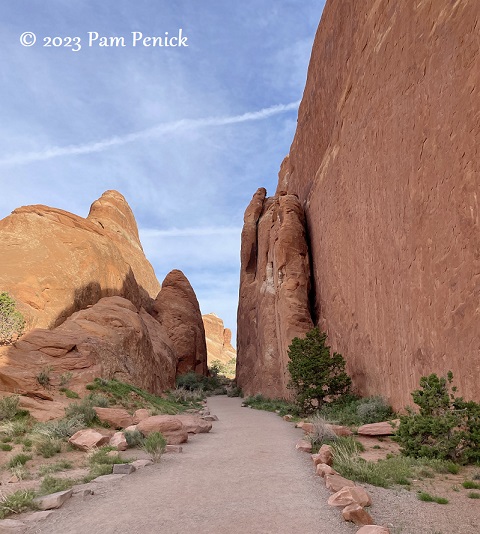
Our first hike that morning was in Devils Garden, where we walked between red fins of rock.
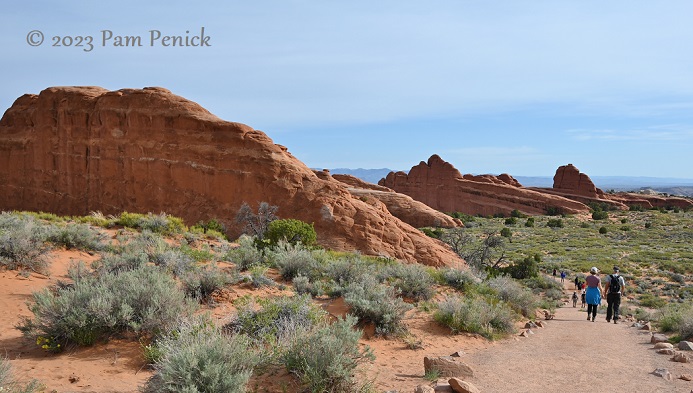
The landscape was a beautiful combination of red rock, green desert shrubs, and blue sky.
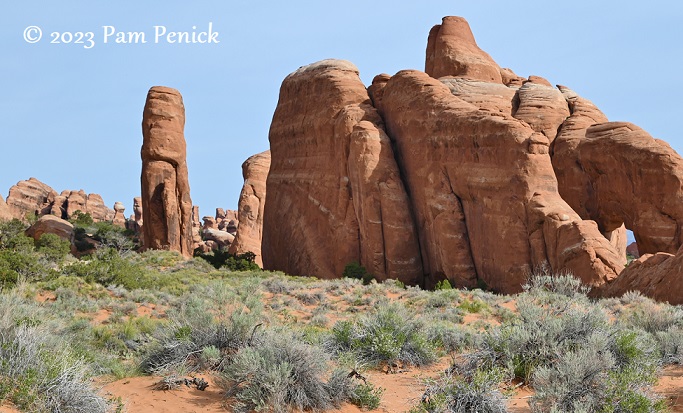
The strangely shaped rocks, like clouds, prompt the human impulse to say, That looks like…
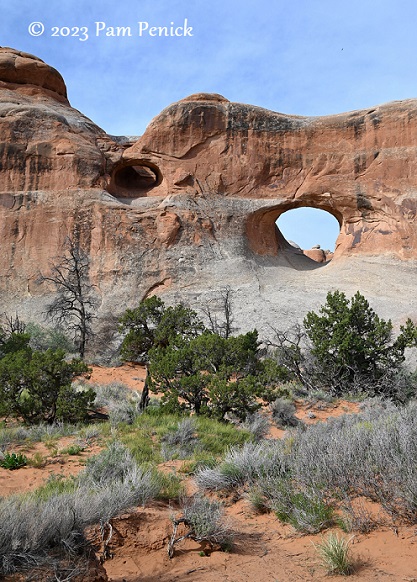
There are a number of large arches along this trail — or peepholes to the sky, in the case of high Tunnel Arch.
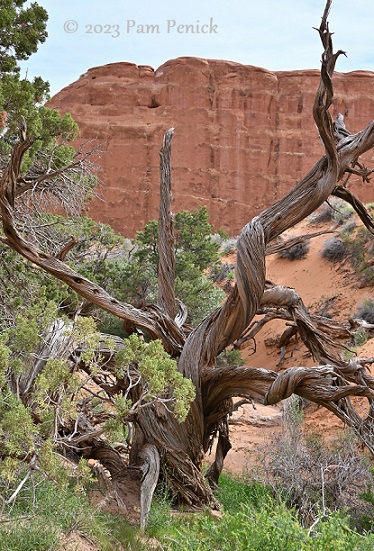
And old twisted tree trunk adds its own weathered beauty.
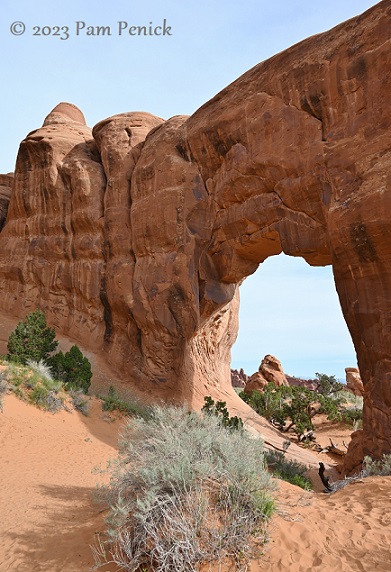
Pine Tree Arch was one of my favorites for its relative solitude and moon-gate opening.
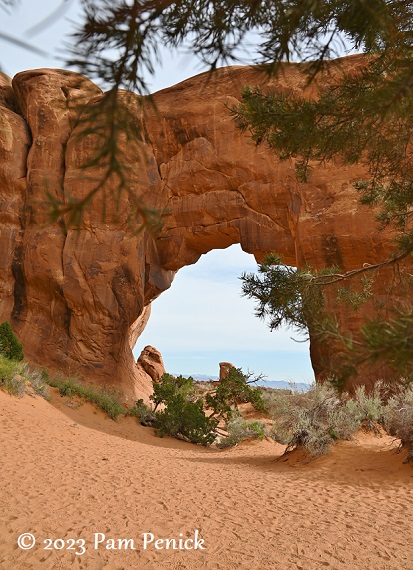
I found a pine tree — or some sort of conifer — to photograph with Pine Tree Arch.
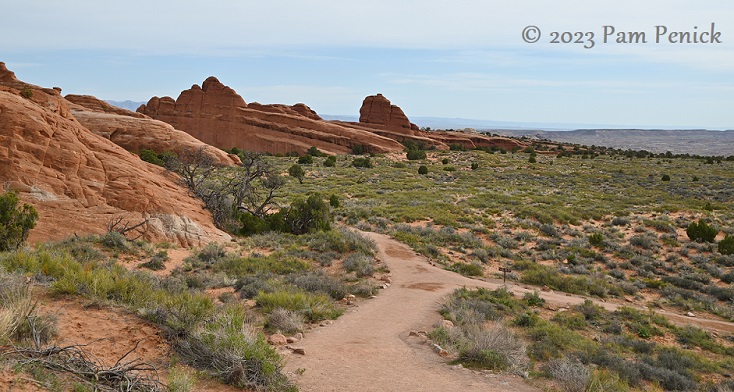
More fins rising from the earth like gigantic sailfish in the ocean
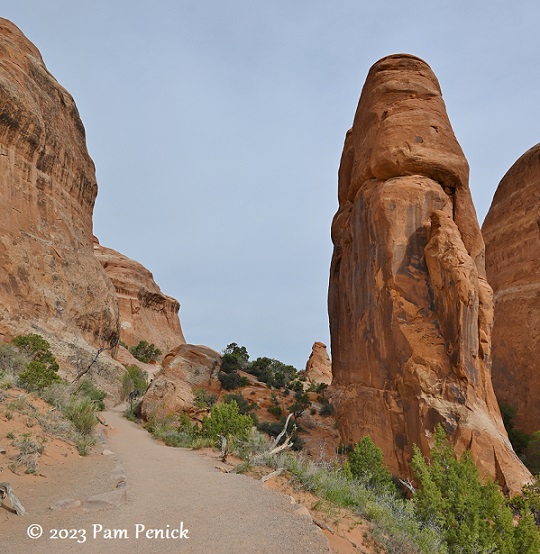
Following the trail…
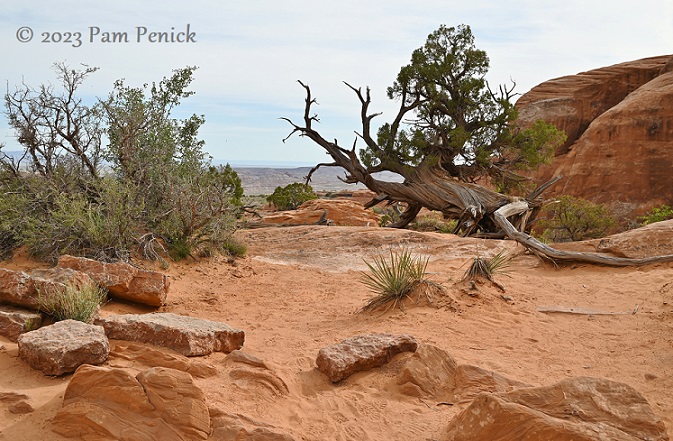
It’s amazing that plants, even trees, can eke out a living in a desert landscape like this, but they do.
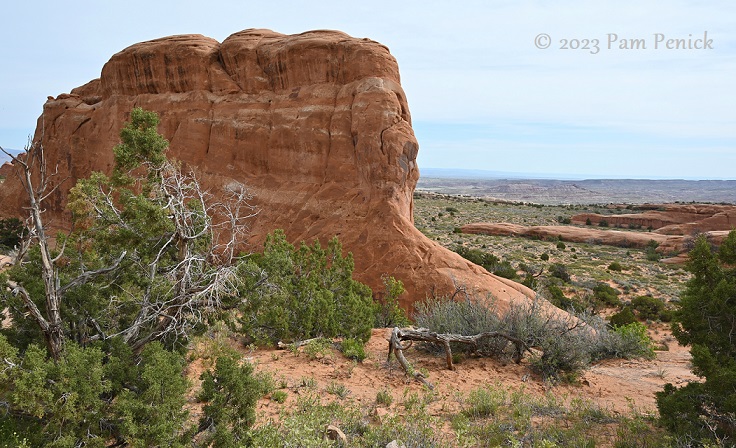
A view of the surrounding country
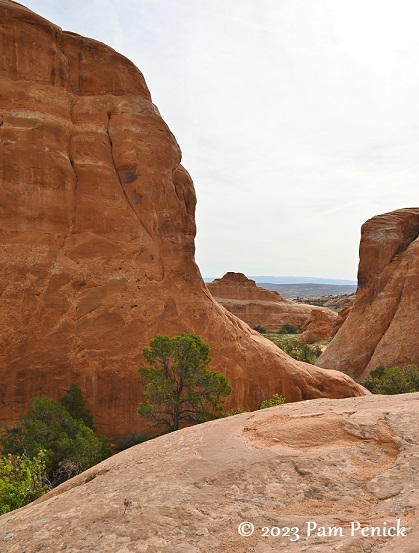
Big rock fins
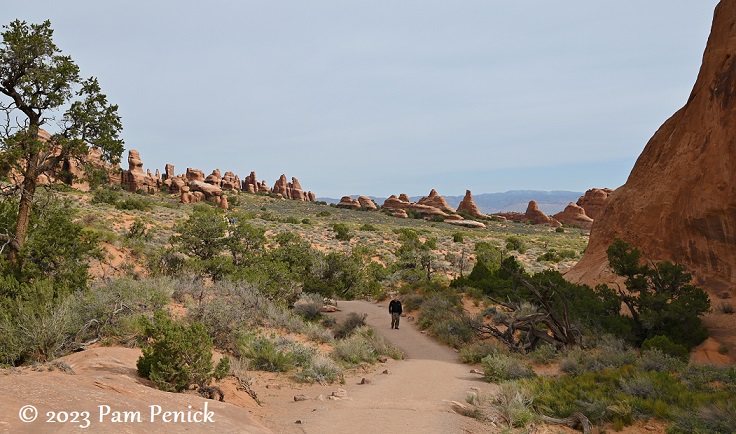
More odd rocks in the distance
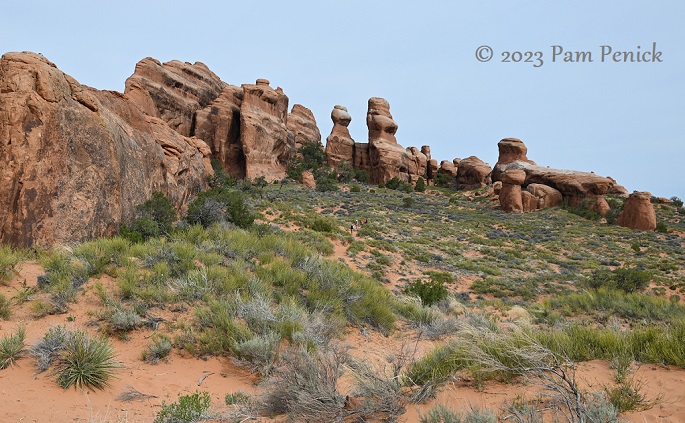
Mushroom rocks and other blobby formations
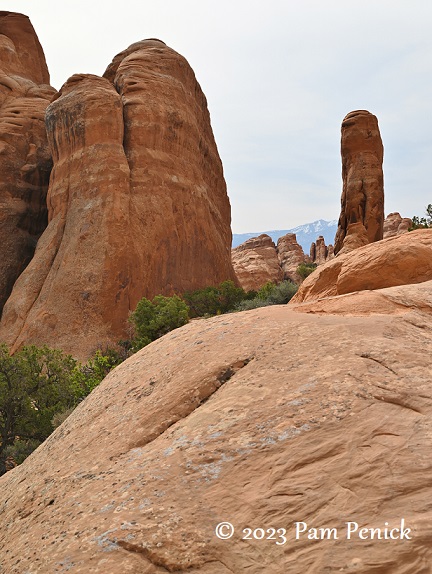
No comment on this one
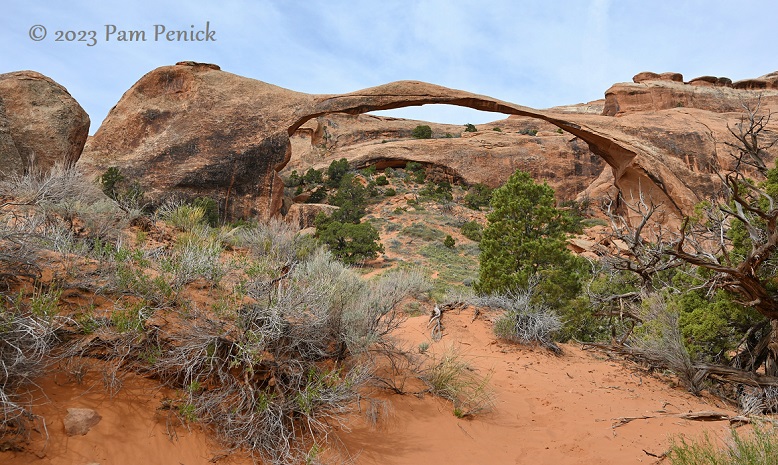
The most spectacular arch in Devils Garden is Landscape Arch, a skinny ribbon of rock that spans 306 feet.
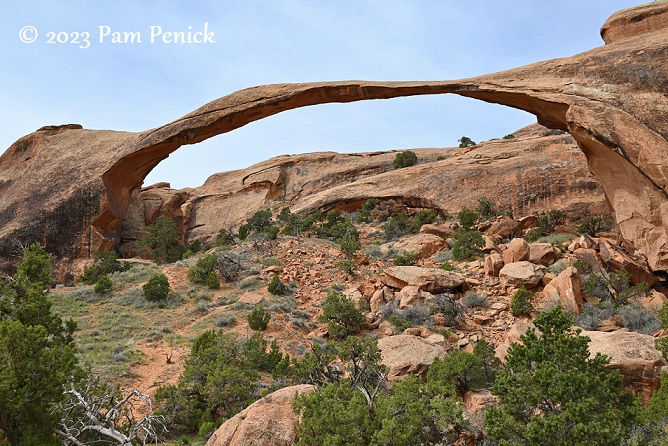
“This awe-inspiring expanse is only 6 feet (1.8 meters) in diameter at its narrowest. Large segments of the arch came crashing down in the 1990s – proof that the park’s landscape can change dramatically in a instant. Although other arches have fallen, Landscape Arch still hangs on by a very thin thread.”
https://www.nps.gov/places/landscape-arch-trail.htm
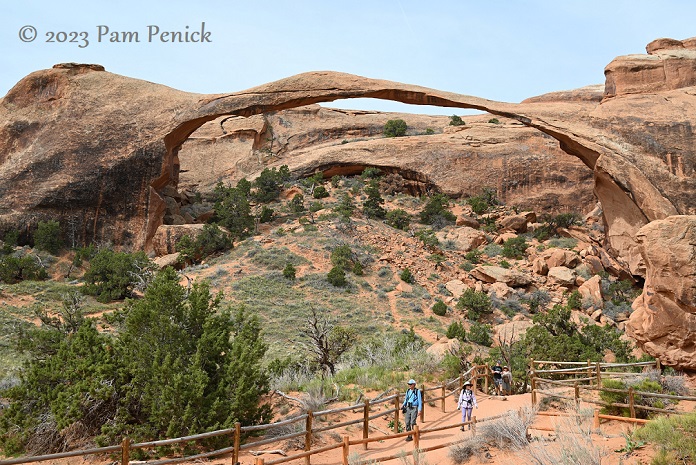
With fellow hikers for scale
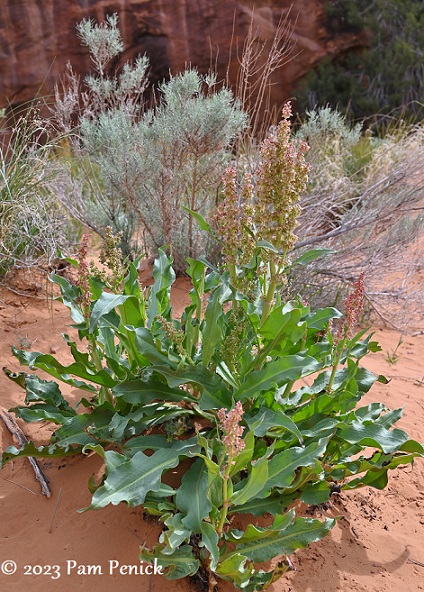
Wild rhubarb flaunts rosy-pink flowers that match the red sand.
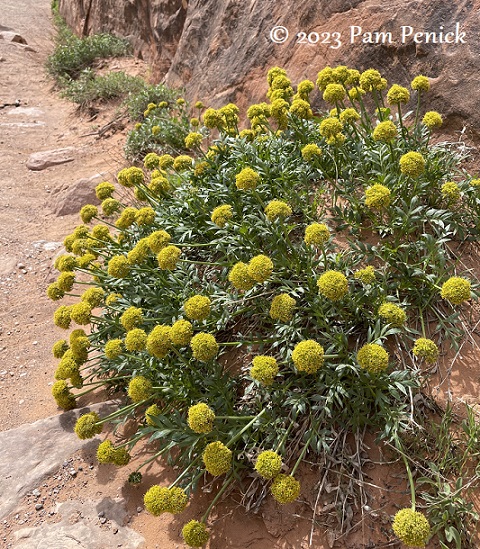
I admired this wildflower too, with buttons of chrome-yellow flowers. I think it may be a lomatium?
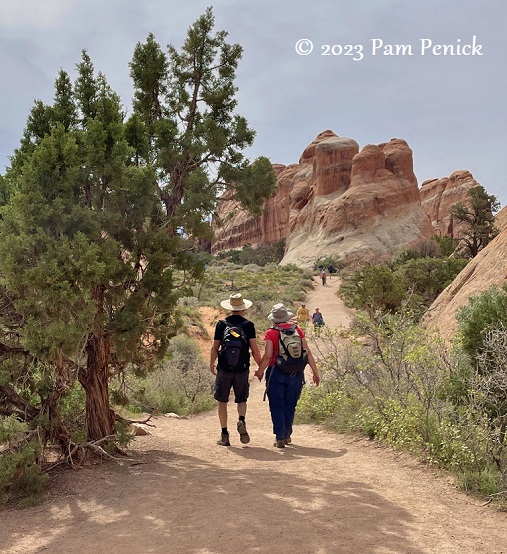
A cute couple holding hands as they hiked along the trail
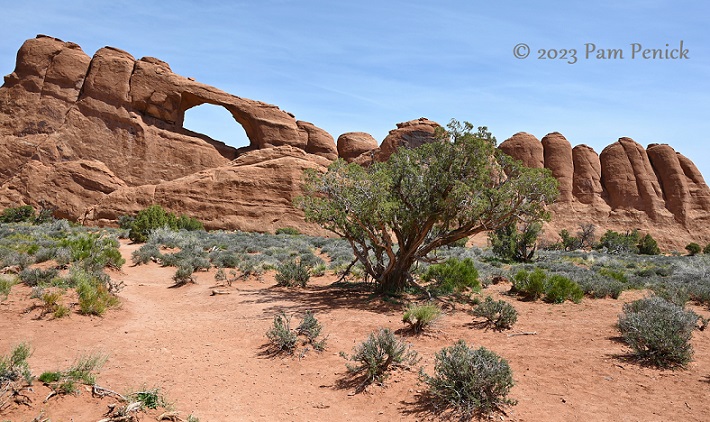
Back in the car, we stopped at a short trail to Skyline Arch, which tilts among stubby, upright rocks that resemble ladyfingers cookies.
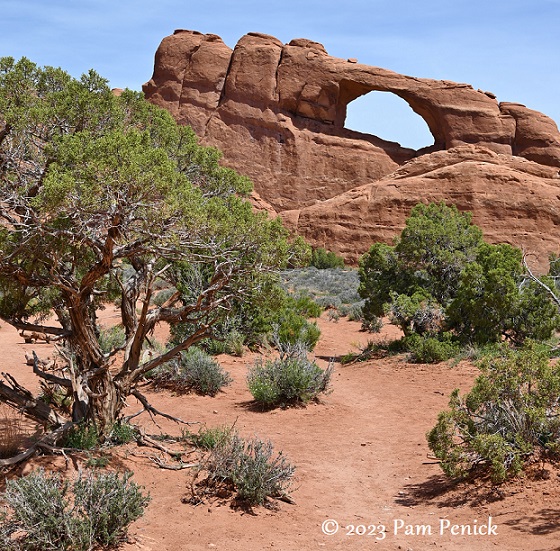
The arch looks a bit like the unblinking eye of a monstrous creature’s head.
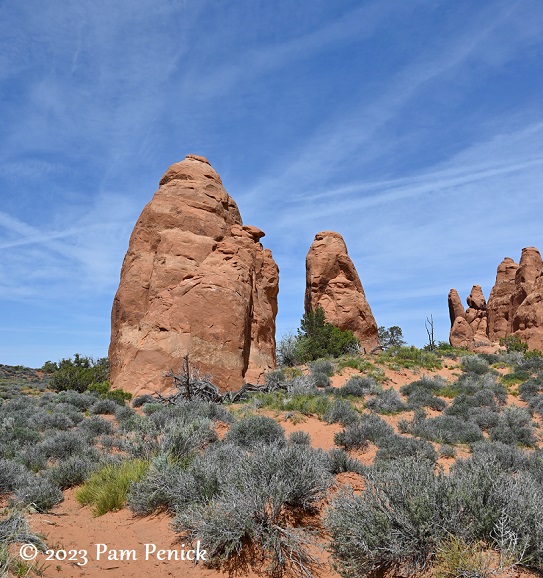
Haystack-shaped rocks greeted us along the trail.
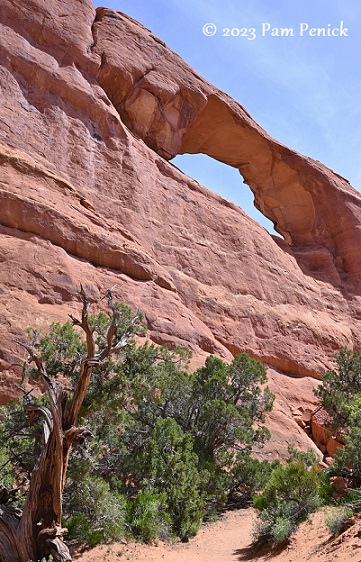
“Arches are constantly changing. Most changes are slow, but some can be dramatic. A large boulder suddenly fell out of Skyline Arch in 1940, roughly doubling the size of the opening.”
https://www.nps.gov/places/skyline-arch.htm
I’m glad nothing that dramatic happened while we were visiting.
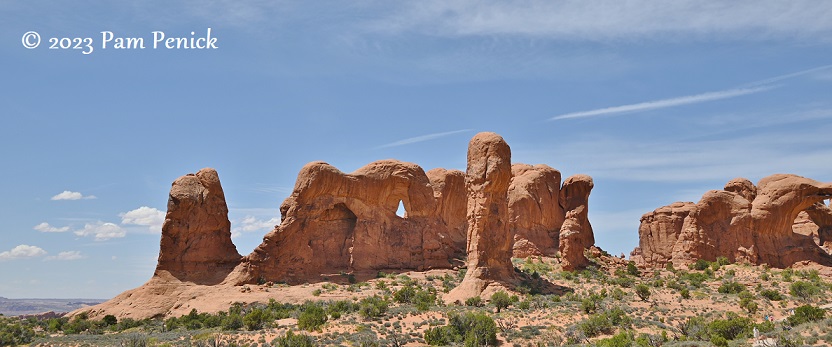
With its fantastically shaped rocks, many with windows open to the sky, I can see why Arches is a popular national park.
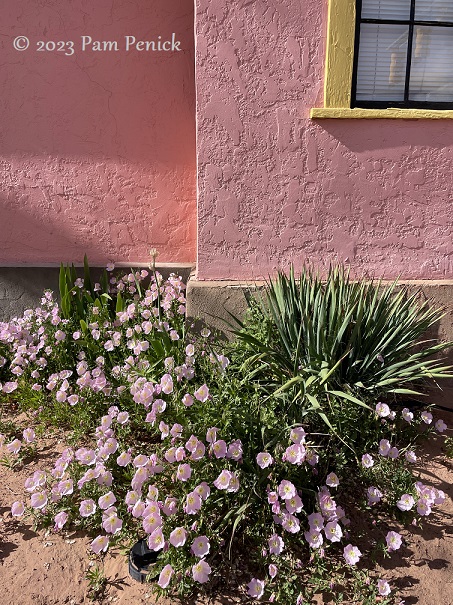
Moab is a nice little town too, with friendly people, good restaurants (we loved 98 Center), and cute shops. I’ll leave you with a pink stucco building that matches a tumble of pink evening primrose, spotted along the main drag.
Up next: Fascinating petroglyphs along Utah Highway 279 outside Moab. For a look back at hundreds of petroglyphs at Newspaper Rock outside Canyonlands National Park, click here.
__________________________
Digging Deeper
Come learn about gardening and design at Garden Spark! I organize in-person talks by inspiring designers, landscape architects, authors, and gardeners a few times a year in Austin. These are limited-attendance events that sell out quickly, so join the Garden Spark email list to be notified in advance; simply click this link and ask to be added. Season 8 kicks off in fall 2024. Stay tuned for more info!
All material © 2025 by Pam Penick for Digging. Unauthorized reproduction prohibited.


Dramatic and almost other-worldly.
Isn’t it? I’ve never seen anything like Arches.
Like the great cathedrals in Europe – gobsmacking!
Pretty much!
What reminded you of monstrous creature’s head, reminded me of the Easter Island statues…
Such a dramatic landscape must stay with you for a long time. As I was reading I started to wonder how these marvelous view will change in the future. Will it all crumble down, grind down to sand? How did it look a few thousands years ago?
Tunnel Arch photo is gorgeous: a fantastic color scheme.
The answer is, yes, Arches will eventually all crumble away to sand. The arches are continually shedding slabs of rock and being eroded, and arches occasionally collapse. But new arches are also being formed by the process of erosion. So it seems there will be arches to see for thousands of years to come.